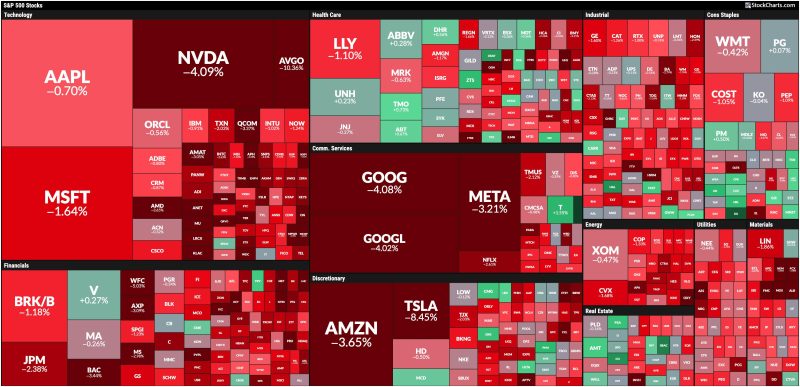Broad-Based Stock Market Selloff: How to Position Your Portfolio
Identifying the Warning Signs
A broad-based stock market selloff can be a cause for concern for investors of all levels. Recognizing the warning signs and taking appropriate action can help position your portfolio for success during uncertain times. One key indicator of a potential selloff is a sudden, widespread decline across various sectors and industries. This is often triggered by external factors such as economic instability, geopolitical tensions, or unexpected market events.
In addition to observing market trends, paying attention to key economic indicators can also provide valuable insights. Factors such as inflation rates, interest rates, and corporate earnings can impact investor sentiment and trigger a selloff. By staying informed and monitoring these indicators, investors can better anticipate market movements and make informed decisions about their portfolios.
Diversification and Risk Management
Diversification is a crucial strategy for weathering a broad-based stock market selloff. By spreading your investments across various asset classes, sectors, and geographic regions, you can reduce the impact of a selloff on your overall portfolio. Diversification helps mitigate risk and protect your investments from losses concentrated in a single area.
Risk management is equally important when preparing for a market downturn. Establishing stop-loss orders, setting profit targets, and regularly rebalancing your portfolio can help limit potential losses and preserve capital during volatile market conditions. By adopting a disciplined approach to risk management, investors can navigate turbulent markets with greater confidence and resilience.
Opportunities in a Downturn
While a broad-based stock market selloff can be unsettling, it also presents opportunities for savvy investors. Market corrections can create buying opportunities for undervalued assets and high-quality stocks. By maintaining a watchlist of promising investments and staying patient during volatile periods, investors can capitalize on market dips and position their portfolios for long-term growth.
Another strategy to consider during a downturn is dollar-cost averaging. By investing a fixed amount of money at regular intervals, regardless of market conditions, investors can take advantage of lower prices during selloffs and reduce the impact of short-term market fluctuations on their overall returns. Dollar-cost averaging is a disciplined approach that can help investors capitalize on market volatility and build wealth over time.
Staying Calm and Informed
During a broad-based stock market selloff, it is essential for investors to remain calm, rational, and well-informed. Emotional decision-making can lead to impulsive actions that may harm your portfolio in the long run. By maintaining a long-term perspective, conducting thorough research, and seeking advice from financial professionals, investors can make sound decisions that align with their investment goals and risk tolerance.
In conclusion, preparing for a broad-based stock market selloff requires a combination of vigilance, diversification, risk management, and opportunistic thinking. By recognizing warning signs, maintaining a diversified portfolio, managing risk effectively, capitalizing on opportunities, and staying informed, investors can navigate uncertain market conditions with confidence and resilience. With a strategic approach and a focus on long-term goals, investors can position their portfolios for success in any market environment.
